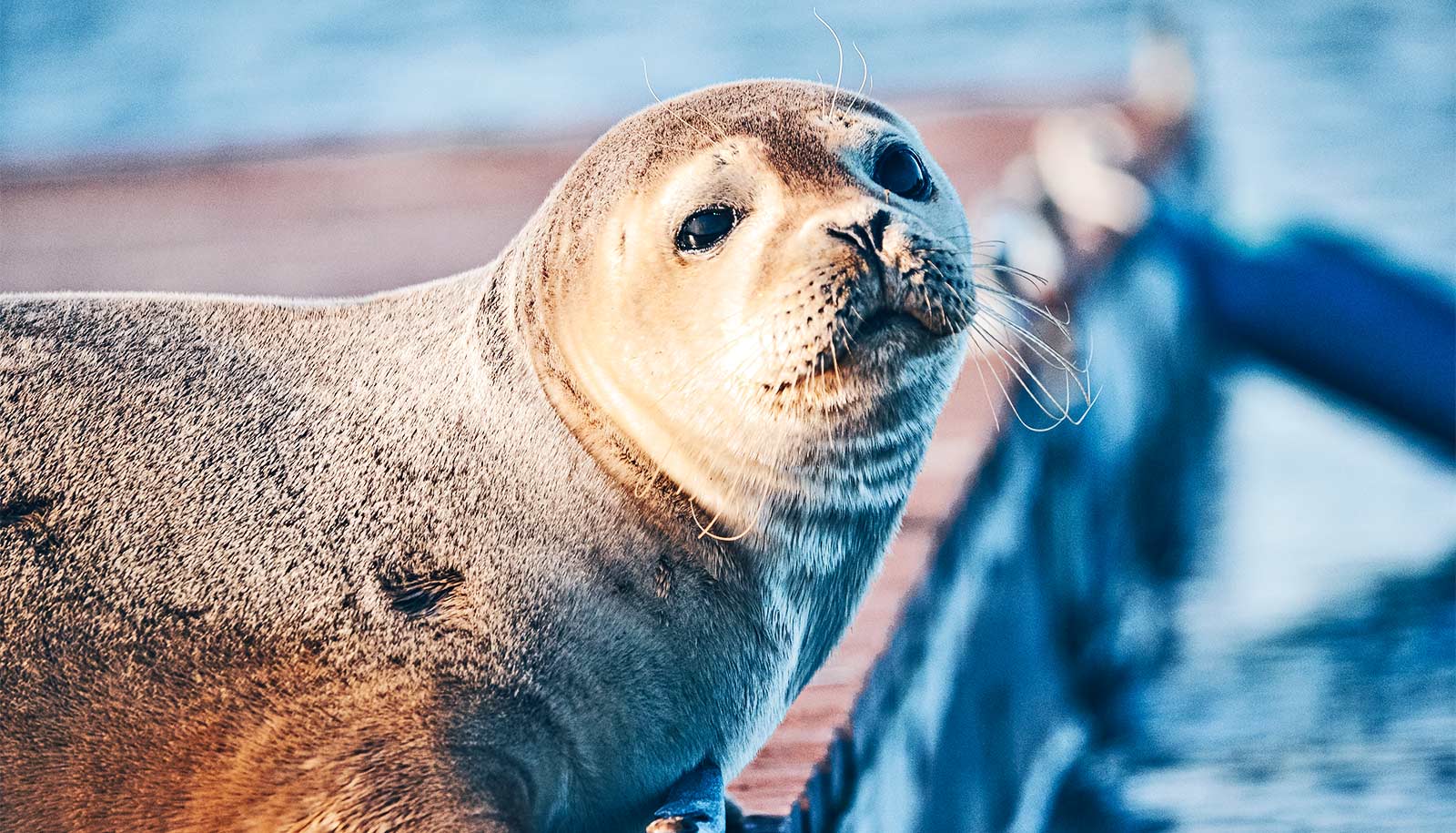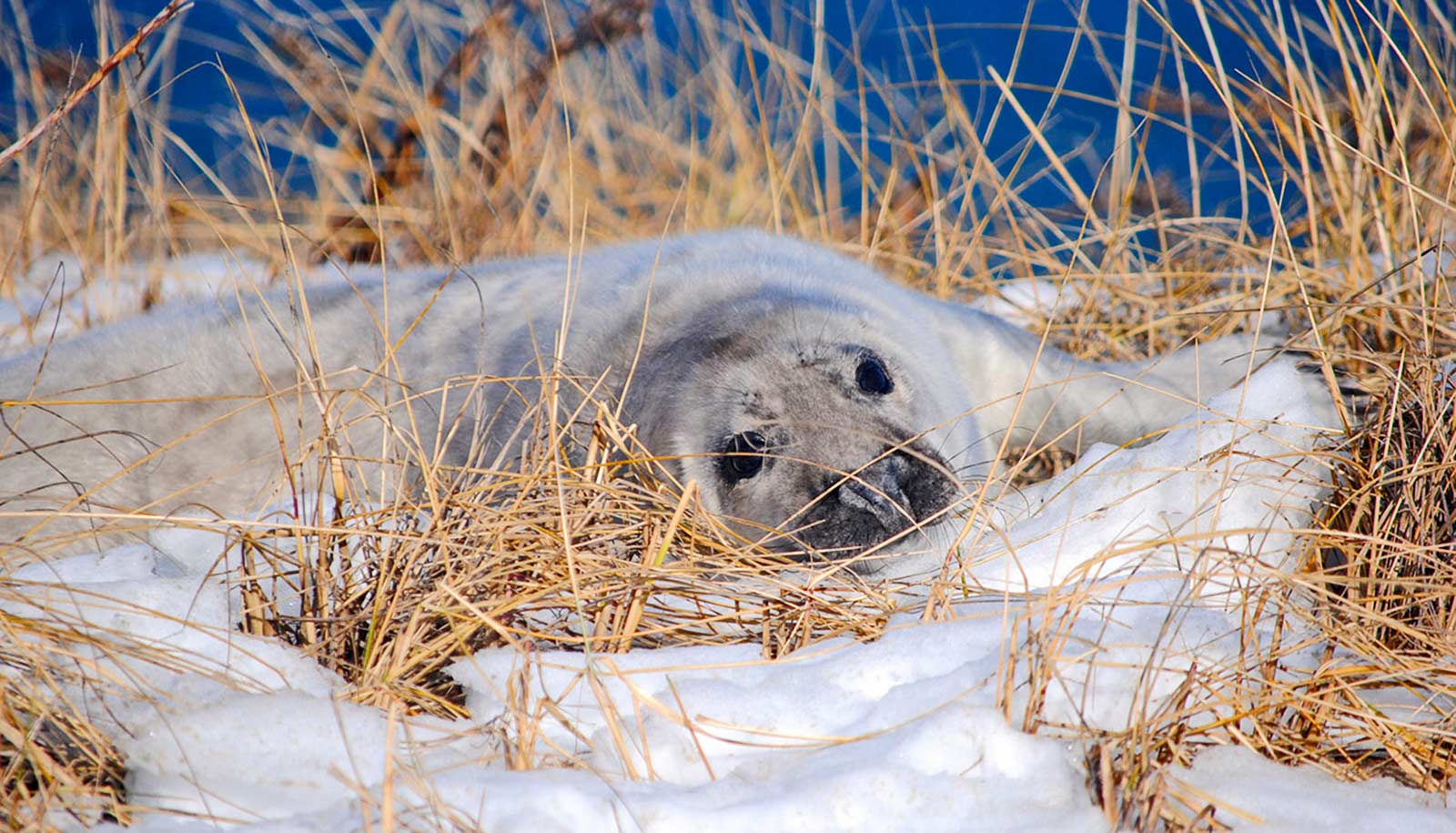A new study links an outbreak of highly pathogenic avian influenza with the deaths of more than 330 New England harbor and gray seals along the North Atlantic coast in June and July 2022.
The outbreak was connected to a wave of avian influenza in birds in the region, the researchers report.
HPAI is more commonly known as bird flu, and the H5N1 strain has been responsible for about 60 million poultry deaths in the US since October 2020, with similar numbers in Europe.
The virus was known to have spilled over from birds into mammals, such as mink, foxes, skunk, and bears, but those were mostly small, localized events. The new study in the journal Emerging Infectious Diseases is among the first to directly connect HPAI to a larger scale mortality event in wild mammals.
“We have a better resolution and greater depth of detail on this virus than before because we were able to sequence it and detect changes almost in real time,” says co-first author Wendy Puryear, a virologist and senior scientist in the Runstadler Lab at the Cummings School at Tufts University. “And we have pairings of samples, sometimes literally from a bird and a seal on the same beach.”
The clinic has been conducting avian influenza surveillance on birds and some mammals since January 2022, shortly after this strain of avian influenza took a trans-Atlantic journey from Europe into the US. Through this testing, the team found a wide range of flu viruses, including at least three strains that crossed the Atlantic, and they witnessed consistent waves of infection in birds.
At the same time, in collaboration with NOAA’s Greater Atlantic Region Marine Mammal Stranding Network, the researchers were able to screen nearly all seals that came through the network, whether or not the animal appeared sick. The stranding network is composed of experts from state and federal wildlife and fisheries agencies, non-profit rehabilitation and response facilities, aquariums, and academic institutions who respond to strandings.
“Because of the genetic data that we gathered, we were the first to see a strain of the virus that’s unique to New England. The data set will allow us to more meaningfully address questions of which animals are passing the virus to which animals and how the virus is changing,” says postdoctoral researcher Kaitlin Sawatzki, a coauthor of the study.
Seals and sea birds in close contact
In addition to poultry, H5N1 also has had a huge impact on wild birds, especially sea birds. Multiple locations around the globe have experienced large die-offs, such as recently in Peru, where the virus killed 60,000 pelicans, penguins, and gulls.
At the time of the seal mortality event in New England, the virus was hitting gulls particularly hard, the researchers found. There are lots of ways gulls and other birds may transmit the virus to seals, they say.
Seals and sea birds are coastal animals living in the same areas that have environmental contact, if not direct contact, since they share the same water and shoreline. A seal may contract the virus if it comes in contact with a sick bird’s excrement or water contaminated by that excrement, or if it preys upon an infected bird.
The accepted knowledge is that H5N1 is nearly 100% fatal for domestic and wild birds other than waterfowl, and the same is proving true when it comes to spillover in wild mammals. All the seals that tested positive for HPAI were deceased at the time of sampling or succumbed shortly after. None of the animals that tested positive recovered. However, it’s possible some asymptomatic or recovered cases never came into the stranding networks.
In addition to the seal mortality event in New England, which was the first time H5N1 was detected in marine mammals in the wild, other locations have lost marine mammals to the virus. Peru announced about 3,500 sea lions died from the virus, Canada reported a seal mortality event along the St. Lawrence Estuary, and there was a similar event with seals in the Caspian Sea, according to news reports from Russia.
A hotly debated topic among scientists is whether there has been mammal-to-mammal transmission of HPAI between seals.
“It’s not surprising that you might have transmission between the seals, because it has happened with low pathogenic avian influenza,” says Puryear. “However, we can’t say definitively whether or not there has been mammal-to-mammal transmission of HPAI.”
“To get strong evidence of mammal-to-mammal transmission, you need two things: lots of infected animals and time,” explains Sawatzki. “Time for the virus to mutate, and time for the mutated virus to be transmitted to another seal. As the virus acquires mutations, we can see shared mutations in the sequences that are specific only to mammals and that haven’t been seen in a bird before. We had the numbers, but this outbreak didn’t last long enough to provide evidence for seal-to-seal transmission.”
The research team found evidence that the virus mutated in a small number of seals. But fortunately, they have not seen a case of bird flu in seals along the Atlantic coast since the end of last summer. However, stranding season is about to start for harbor seals and gray seals, so they are bracing themselves for what might happen.
Is bird flu a risk to humans?
The risk to the public remains low, according to the Centers for Disease Control and Prevention. Since December 2021, less than 10 human cases of H5N1 have been reported globally, and those cases occurred in people with direct exposure to infected poultry. There are no documented cases of human transmission for this variant.
However, there is the possibility it could become a larger issue for human health. Avian influenza emerged in 1996, and since 2003, 868 cases of human infection with H5N1 have been reported worldwide, according to the World Health Organization. Of those, 457 were fatal, roughly a 50% fatality rate.
“And that’s why people get nervous about it,” Puryear says.
There is a single-dose vaccine available for poultry, but it’s not currently administered on a large scale—in part because of cost and logistics, and in part because there’s some concern it may make future surveillance of the virus more difficult.
There’s not much that can be done in terms of responding to the virus for wildlife, particularly given the scale at which infection is occurring.
Biosecurity is important in limiting the ways in which the virus can spread between and within species, the researchers say. For example, wild birds should be kept separate from domestic birds, such as backyard chickens. In addition, thorough and timely surveillance of domestic animals and wildlife is key to understanding how the virus is evolving to prepare the best possible vaccines and treatments.
The National Institutes of Health’s National Institute of Allergy and Infectious Disease supported the research reported in the paper. Complete information on authors, funders, and conflicts of interest is available in the published paper. The content is solely the responsibility of the authors and does not necessarily represent the official views of the funders.
Source: Tufts University



